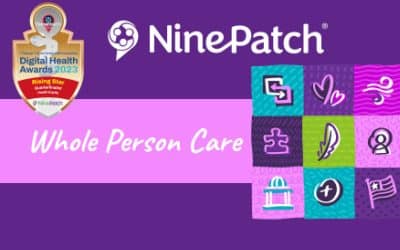Whole Person Healthcare Model Insights and Opportunities
Home » Blog » Collaboration »

A whole person healthcare model combines physical, behavioral, and mental health care while addressing the effects of social determinants of health (SDOH) circumstances. The benefit for individuals includes ease of access to comprehensive services across all health domains, a personalized approach, and “care when and where needed.”
For health systems, healthcare providers, and payers, whole person care (WPC) programs achieve better outcomes, reduce costs, and support population health management. Integrating with community services is a component of WPC. Vulnerable and high-risk populations in urban and rural areas benefit from coordination of care that can include sending closed-loop referrals between clinical and community-based organizations.
The focus of this article is to:
- Provide insights into whole person care delivery.
- Highlight patient and provider healthcare experiences.
- Discuss the primary care provider relationship that combines whole person care with social determinants of health assessments..
- Identify how technology might increase adoption of whole person healthcare models.
- Share success stories and opportunities for clinical and community collaboration from the CMS FY 2024 Payment Policies Under the Physician Fee Schedule proposed rule.
NinePatch® is recognized as an innovative solution for Whole Person Care and social determinants of health in communities across the United States. To learn more, schedule a demo today.
A Picture of Whole Person Care
Providing whole person care and considering SDOH and health related social needs (HRSN) may seem straightforward. However, collaboration between healthcare and social providers can be hindered by factors like available technology, interoperability, and innovation.
To illustrate this idea, let’s look at a best-case scenario of whole person care implementation.
Problem: A person with diabetes has no refrigerator to store insulin.
Solution: Providing a refrigerator to store insulin can reduce unplanned hospitalizations and more extensive acute care costs.
While the lack of a refrigerator is an experience that people in developed countries can understand, let’s look at a world-view of the refrigerator story. A Doctors Without Borders article adds insight into treating persons with diabetes who are refugees and victims of natural disasters, wars, and famines.
Let’s look further at diabetes care in the context of whole person care across four domains—physical, mental, and behavioral health and social care. Coordinated care efforts deliver better outcomes for persons with complex needs. Access to electronic health records and interoperable software programs can result in improving the quality of care and patient experience.
A primary care physician (PCP) treating a person with type 1 diabetes (T1D) can support whole person care by sharing health records and communicating with specialty practices like endocrinology, mental health, behavioral health, nephrology, dermatology, neurology, etc. Additionally, interoperable software can enable PCPs to share and reconcile medication lists, identify and refer to services provided by community-based organizations.
- Interdisciplinary care teams can create a person-centered care plan for T1D to address SDOH concerns, including transportation to appointments, access to affordable medications, telehealth, and other needs.
- Patients and clients can provide consents, complete health and SDOH assessments, and upload documents using a software portal.
- Notifications for admission-discharge-transfer (ADT) can be sent to healthcare providers and community health workers.
- Care coordination across clinical and social care providers can support daily routines for T1D that include education about counting carbs, insulin dosing, using supplies and equipment like continuous glucose monitors (CGMs) and insulin pumps, or completing an ADA 504 plan for children in school.
- Closed loop referrals from PCPs to specialty practices and social care organizations can result in plan or programs to address T1D and T2D medical care for circulatory disorders, wound care, neuropathy, kidney care, identify risks and treat memory loss, substance use disorders, homelessness, and other ongoing care needs.
Patient outcomes improve when all provider types combine efforts—physical health, mental health, behavioral health, and social care. As a result of clinical and social care coordination, trust can grow between physicians, community health workers, and patients.
Improved outcomes can be realized when patients no longer seek care in hospital emergency rooms as their first line of support. Additionally persons with T1D may gain confidence managing insulin supplies and dietary needs through participation in diabetes education programs.
These experiences can translate to positive outcomes and reduced costs for all persons and improved relationships with providers.
Patient and Provider Experiences
While providing whole person care may seem simple, what complications exist in patient, provider, and physician experiences?
The Patient Experience
Patients often don’t know or understand the complicated aspects of health data exchange, payer-physician relationships, insurance authorizations, deductibles, or copays. Negative experiences can happen when patients become frustrated by requests to repeat the same information to more than one healthcare provider.
Another common source of dissatisfaction is the time and effort to appeal the denial of a healthcare claim. Lastly, patients may spend a significant amount of time applying for benefits only to discover that they do not qualify.
Technology-related factors, SDOH, or other circumstances can affect the patient’s experience. Several examples include:
- An inability to share data across across organizations and vendor platforms. For example, healthcare providers may be unable to provide the best care without access to patient records in or out-of-network, within states, or across state lines.
- In the absence of data sharing, patients become responsible to ensure providers have the correct data for diagnosis and treatment. This level of involvement may not be possible for vulnerable and at-risk individuals—like persons experiencing homelessness or those with low health literacy.
- Providers who speak in simple terms to explain the benefits of ongoing care or treatments build trust. Patients who trust physicians are more likely to attend regular medical appointments and experience stable or improved health. This is in contrast to individuals with no PCP who primarily visit emergency rooms or urgent care clinics where acute care, not whole person care, is the focus.
- Access to health and community services can be impacted by geographic location and the environment where individuals live. Distance or a lack of transportation can make transit to grocery stores, pharmacies, healthcare clinics, and hospitals challenging.
Individuals of all backgrounds experience a variety of challenges navigating services. As a result, individuals may limit or avoid contact with health and social care systems. Children, older adults, women, and people of color are most negatively affected.
A Commonwealth Fund research article confirms that:
“Medical mistrust is not just related to past legacies of mistreatment but also stems from people’s contemporary experiences of discrimination in health care — from inequities in access to health insurance, health care facilities, and treatments to institutional practices that make it more difficult for Black Americans to obtain care. Often, patients who don’t trust their health care providers are labeled as non-compliant and blamed for their failure to benefit from treatment.”
Labeling patients as non-compliant may be an easy assumption by medical providers who lack time to probe for underlying issues. In reality, the foundational cause for lack of participation may be challenges with unrecognized social determinants of health needs.
As healthcare providers incorporate standardized SDOH assessments into their regular workflows, they will label fewer patients as non-compliant. Instead, combining clinical and community support services will increase patient engagement, improve care outcomes, reduce costs, and support public health programs.
Care of the Patient Requires Care of Providers
An study by McEwen, Neurobiological and Systemic Effects of Chronic Stress confirms that chronic stress, when unaddressed, poses a financial burden of disease and disability on the individual and society.
High stress can cause mental distraction, forgetfulness, exhaustion, sleep problems, mood swings, irritability, depression, and substance abuse issues for most people. So, how does the wear and tear of chronic stress translate to the quality of patient care?
In everyday experiences with the healthcare system, patients encounter doctors and medical office staff, labs, hospitals, urgent care clinics, home health, medical supply companies, and other businesses that provide health services.
An increasing number of research studies confirm the stress that primary care physicians and healthcare providers experience. According to an article in JAMA, Professional Dissonance and Burnout in Primary Care:
“Several studies have estimated burnout rates at 50% or greater among US physicians, with even higher rates estimated among primary care physicians. Left unaddressed, high burnout rates in medicine threaten the long-term health of the profession.”
The AMA confirms that physician burnout can hinder patient-physician communication, leading to a lack of trust. So, what support exists for healthcare providers who care for patients?
How is the healthcare system addressing healthcare provider stress and burnout and the potential effects on patient care?
The Triple and Quadruple Aim
The Triple Aim framework was developed to support healthcare system goals by the Institute for Healthcare Improvement (IHI) in Cambridge, Massachusetts. The approach to optimize performance initially focused on three areas.
However, as time passed, the realization of well-being for healthcare providers grew in importance. So, the Triple Aim transitioned into the Quadruple Aim with these focus areas:
- Improve population health
- Enhance patient experience
- Reduce costs
- Improve the work-life of health care clinicians and staff
The Primary Care Link to Whole Person Care and SDOH
The link between primary care providers (PCPs) and patient-centered care is critical to implementing whole person healthcare models.
In the past, PCPs have expressed concern about screening for SDOH but felt unable to address the concerns. For example, the American Academy of Family Physicians (AAFP) “The EveryONE Project” confirms that:
- 83% of family physicians (FPs) should identify and help address patients’ SDoH.
- 80% don’t have time to discuss SDoH with patients.
- 78% agree FPs should partner with community organizations to address community health disparities.
- However, 64% are not adequately staffed to address risk factors with patients.
- 56% feel unable to provide solutions to patients.
- 75% agree that FPs should advocate for public policies that address SDoh
The good news is that if finalized as written, the CMS proposed rule of August 2023 creates a path for primary care physicians to work with community health workers (CHWs) and community-based organizations (CBOs).
- G Code GXXXX5 creates a billable event for physician time to administer a standardized SDOH assessment.
- Community health workers (CHWs) employed by health systems or community-based organizations can move SDOH efforts forward by integrating community services and documenting interventions through G-codes GXXX1 and GXXX2.
Clinical and social care collaboration translates to a whole person healthcare model in which primary care physicians play a crucial role. Let’s look at other components of the physician’s experience in health systems today and potential solutions.
The Physician Experience
CMS regularly announces new rules for healthcare systems, doctors, and service providers of Medicare and Medicaid programs. Constraints with added workflows and reimbursement models raise the question of how providers will provide quality care while maintaining patient volumes.
If passed as written, the CMS Proposed Rule of August 2023 will affect primary care practices, community health workers, and social care organizations collaborating to screen for social determinants of health and perform community health integration (CHI) services.
In 2024, there will be standardized assessments to address health equity, social needs, and social determinants. This will lead to discussions about workflows. As proven results from addressing Medicare and Medicaid populations support value-based care initiatives, private payers might follow to adopt similar treatment models and consistent reimbursement mechanisms.
Workflows
Every new requirement intended to benefit patient care can add processes and workflows. Healthcare systems already struggle with administrative and operational challenges.
According to the American Hospital Association, physicians say financial challenges, burdensome insurer policies, and regulatory requirements are reasons they seek alternative practice settings.
Bodenheimer’s research about the Quadruple Aim, confirms that “physicians spend more time on non–non-face-to-face activities (e.g., letters, in-box management, and medication refills) than with patients.”
In the research, physicians shared:
- “The joy of practicing medicine is gone.”
- “I hate being a doctor…I can’t wait to get out.”
- “I can’t tell you how defeated I feel…The feeling of being punished for delivering good care is nerve-racking.”
- “I am no longer a physician but the data manager, data entry clerk, and steno girl… I became a doctor to take care of patients. I have become the typist.”
So, when discussion of the whole person healthcare model and SDOH assessments and screenings arise, clinical and social care organizations may agree in concept. However, staff burnout, inconsistent technology, a lack of training, or other constraints may prevent or delay participation.
When considering the implementation of whole person care or SDOH screenings, healthcare providers ask, “Who will do the work?”
Reimbursement Models
Inconsistent reimbursement models across payers, health systems, and healthcare providers can prevent efforts to improve health outcomes and reduce costs. For example, some hospital systems focus on value-based care (VBC). While physician groups serving the hospital system may be reimbursed on productivity related to fee for service (FFS) or the relative value units (RVU) model.
To understand the difference between value-based care and fee-for-service, you can read a recent article in HealthPayer Intelligence This article provides details information on the two reimbursement models.
Patients benefit when payers and healthcare providers use consistent reimbursement models to support whole person care and assess for social determinants of health. Otherwise large differences in the quality of care provided between urban and rural areas may continue to exist.
For example, when asked about the requirement to assess for sdoh, a physician in private practice reimbursed on a Medicaid fee for service model responded,
“What’s the benefit of adding workflows when Medicaid reimburses $10 per patient visit? Our costs go up, but revenue remains the same.”
CMS substantiates the concern by citing a Health Affairs article confirming that practices caring for underserved populations were less likely to administer the Medicare Annual Wellness visit.
In looking for solutions to improve the patient and provider experience, how can technology support the implementation of whole person healthcare models and sdoh assessments?
Can Technology Increase the Adoption of Whole Person Healthcare Models?
The importance of interoperability in healthcare establishes a foundation for sharing patient data across organizations. Health Information Exchanges (HIEs) and Health Data Utilities (HDUs) do the heavy lifting to support data exchange and analysis between health systems, payers, and providers in the United States.
Availability, Use, and Adoption of Technology
At the organizational level, healthcare technology is at varying stages of use and adoption. Healthcare is using AI to automate tasks, but computers alone can’t provide the personal touch that patients require.
Vendor software solutions that solve workflow problems and offer interoperability are available. However, for organizations with less advanced technology or support services, a lack of program integration with other systems can result in workflow roadblocks. Additionally, as previously mentioned, when access to records is prohibited or information in healthcare records is inaccurate, patient care can suffer.
Vendors and providers can work together to maintain and develop solutions that support ongoing innovation. This collaboration is important as new programs and requirements are constantly introduced by CMS and other governing organizations. Organizational flexibility and a willingness to innovate may be the wise path forward for organizations willing to adapt and thrive.
Technology Use Across Large and Small Health Systems
Here are some examples of how big city health systems and providers in rural or remote areas differ in using technology and innovation.
1 Artificial Intelligence
In some large healthcare systems, providers use artificial intelligence (AI) during patient appointments to collect vital signs and document physician notes that are translated for coding and billing purposes.
- In 2023, the University of Kansas Health System implemented AI transcription to automate clinical notes and medical conversations.
- In June 2023, Google Cloud partnered with the Mayo Clinic “to use AI to make it easier for doctors to access relevant medical notes, research papers or clinical guidelines and also to help patients more easily find the information they need.”
2 Rural Healthcare
Physicians in remote or rural areas may rely on paper documentation in their daily work instead of accessing electronic health records (EHRs), health information exchanges (HIE), or using an online patient portal. In addition, rural challenges of providing healthcare require more significant efforts to engage patients.
- Research by Coombs et. al., specific to rural Montana confirms friction between the perceived needs of rural residents and access to health and social services. Too few providers exist to meet population health needs, and fragmented communication impairs rural health systems’ ability to function.
By understanding the experiences of patients, healthcare providers, and primary care physicians, efforts can continue to support whole person healthcare models across varied settings, geographies, and environments.
Following the trail of healthcare funding and innovation programs from federal to state can inspire collaboration opportunities. In some states, legislation is leading collaboration efforts across clinical healthcare providers.
Success Stories
But this is not to say that healthcare systems or providers must initiate this effort alone. Local organizations working with healthcare providers, health clinics, and payers are leading the way to inspire others to do the same.
Below are examples from Michigan and New York.
Michigan – The Detroit Area Agency on Aging (DAAA)
In July 2020, a Detroit Area Agency on Aging (DAAA) found that Detroit’s older adults were dying at twice the rate of those living elsewhere in Michigan. DAAA’s work to reverse that trend two years later has won multiple awards.
The DAAA worked with Wayne State School of Medicine to publish a 19-year study, “Dying Before Their Time.” The report confirmed the importance of addressing social determinants of health to decrease the excess mortality curve.
The DAAA also partners with Health Centers Detroit, home health agencies, community health clinics, and Federally Qualified Health Centers (FQHC) for in-home vaccination services, health assessments, and food insecurity.
New York – The Western New York Integrated Care Collaborative (WNYICC)
In 2022, the Western New York Integrated Care Collaborative partnered with Medicare Advantage Plans to develop a meal delivery program.
Eligible members received two weeks of meals delivered to their homes after an admission of at least one night in an acute care facility.
- The program delivered a 79% increase in members receiving meals in 2022 vs. 2021.
- Almost 73% of the members surveyed confirmed that the meals allowed them to avoid readmission.
Opportunities for Clinical and Community Collaboration
The CMS Proposed Rule CY2024 Payment Policies Under the Physician Fee Schedule offers a path to provide whole person care and address social determinants of health needs.
Healthcare providers and community-based organizations—including those participating in social care networks or community hubs—can build workflows for reimbursements.
While these efforts may require clinical and social care integration, questions about how and who will be paid and who will do the work are answered. Community-based organizations that participate may be able to create paths to financial sustainability that do not primarily rely on grant funding.
Looking for a Whole Person Healthcare Model?
NinePatch® currently works with organizations throughout the United States to support efforts to implement whole person healthcare models. Schedule a demo today to see how our SDOH software solutions and convener services programs support Whole Person care and SDOH efforts.
Additional articles about whole person care, healthcare interoperability, sdoh assessments and more can be found in the NinePatch blog.
Stay Up To Date
NinePatch® Recognized as Quarterfinalist for the Digital Health Hub Foundation: Digital Health Awards
NinePatch is a Rising Star in the Health Equity Track KNOXVILLE,...
SDOH and Care Coordination Programs and Funding
SDOH care coordination and funding is available from federal, state,...
Whole Person Healthcare Model Insights and Opportunities
A whole person healthcare model combines physical, behavioral, and...




